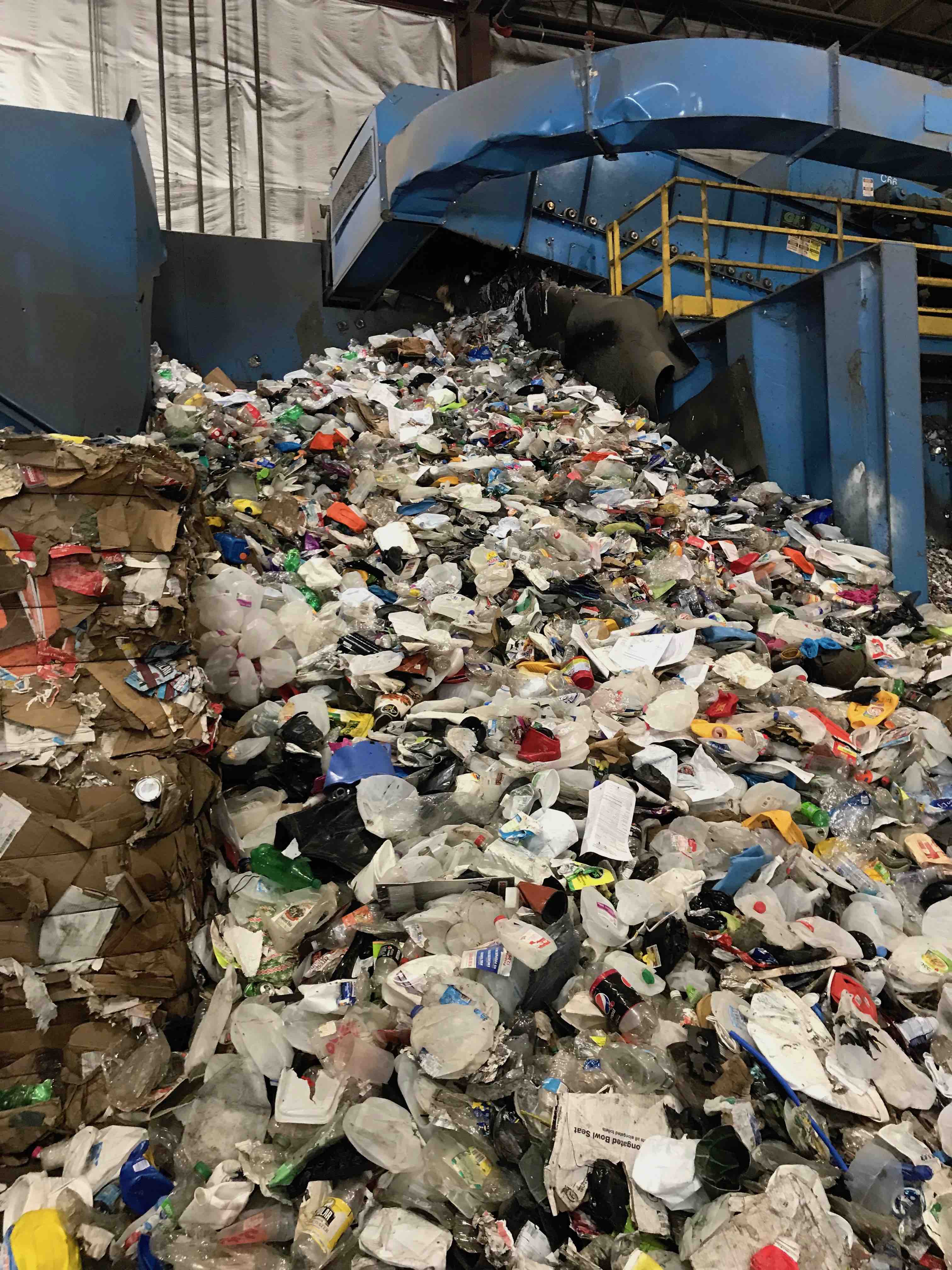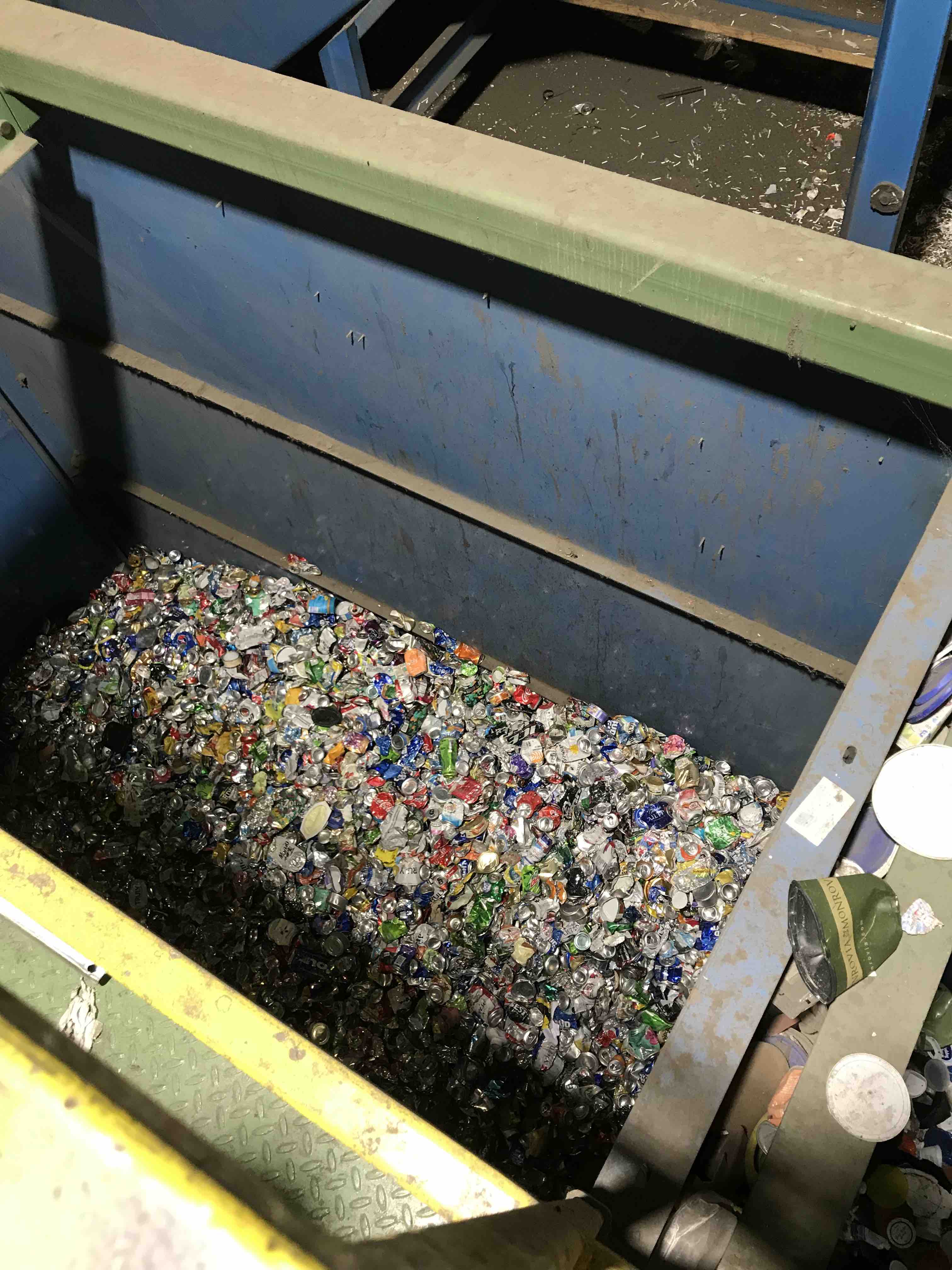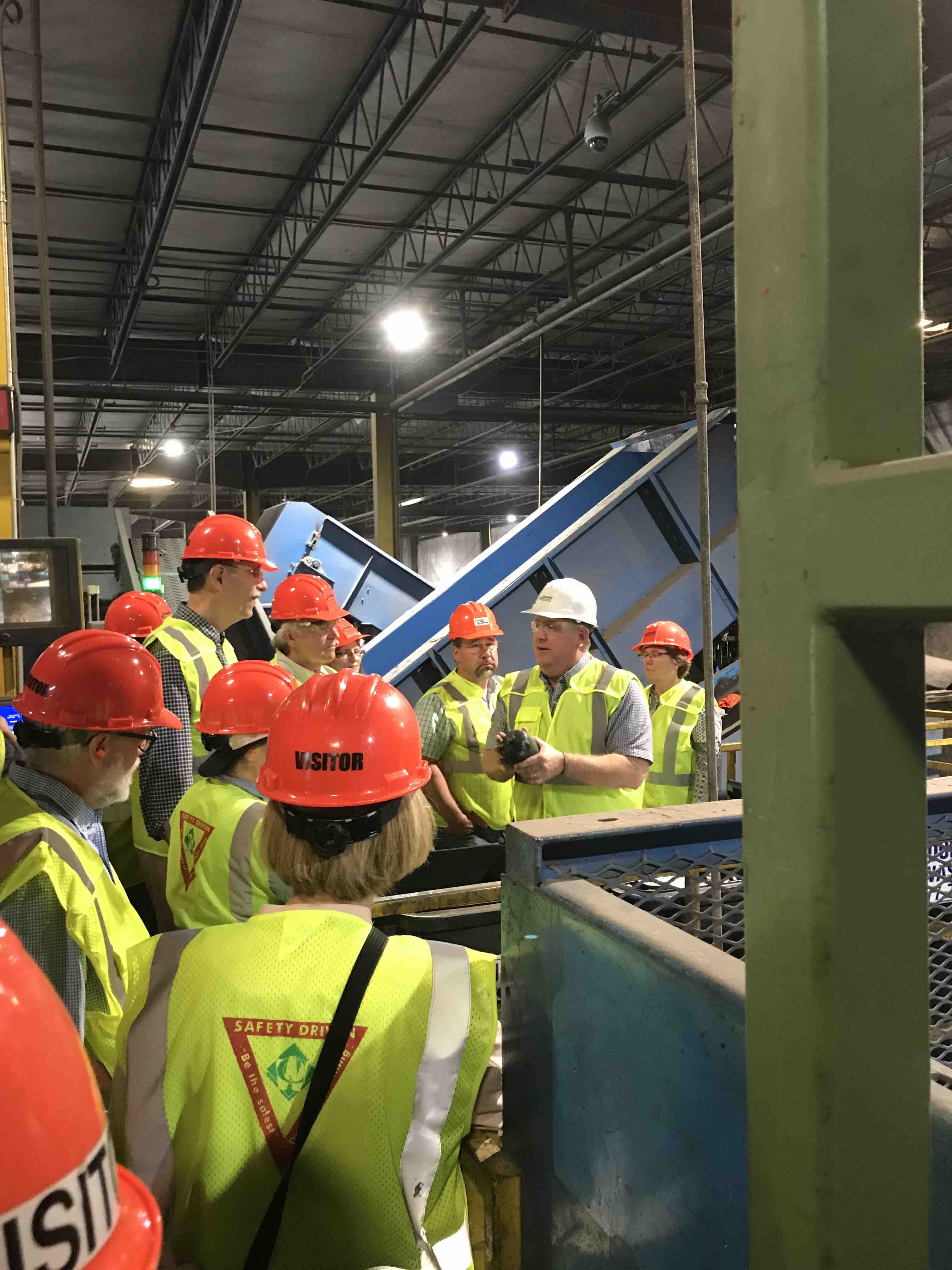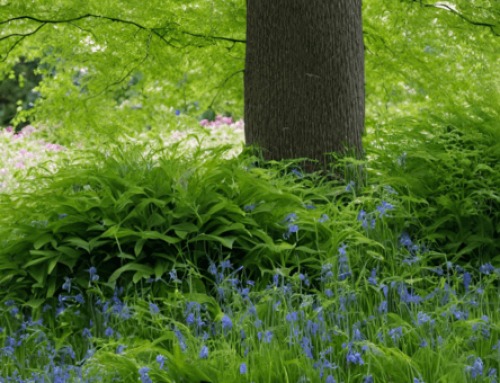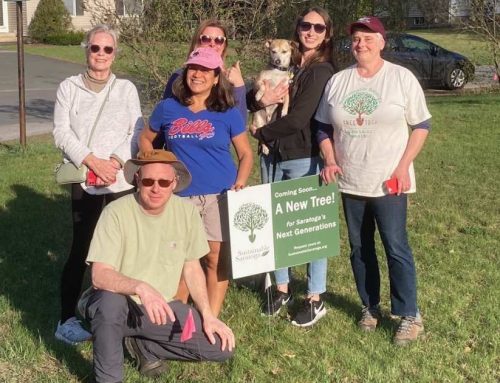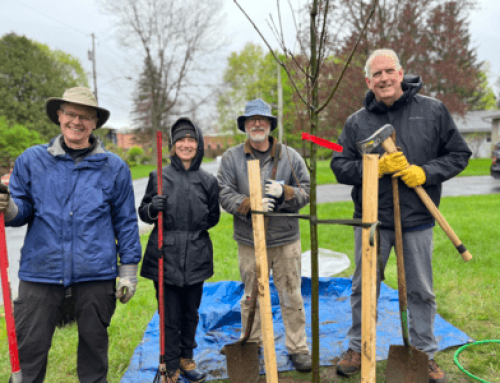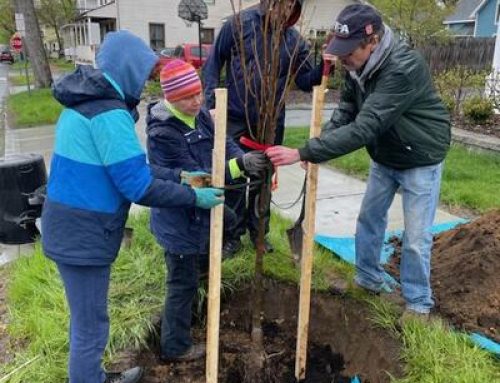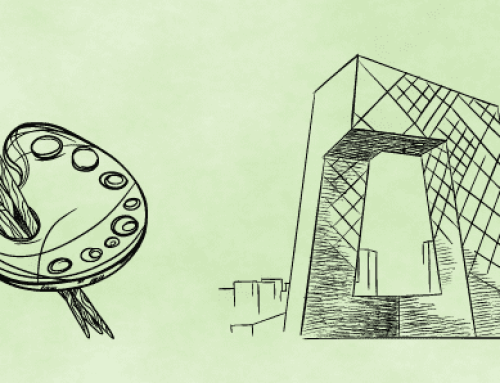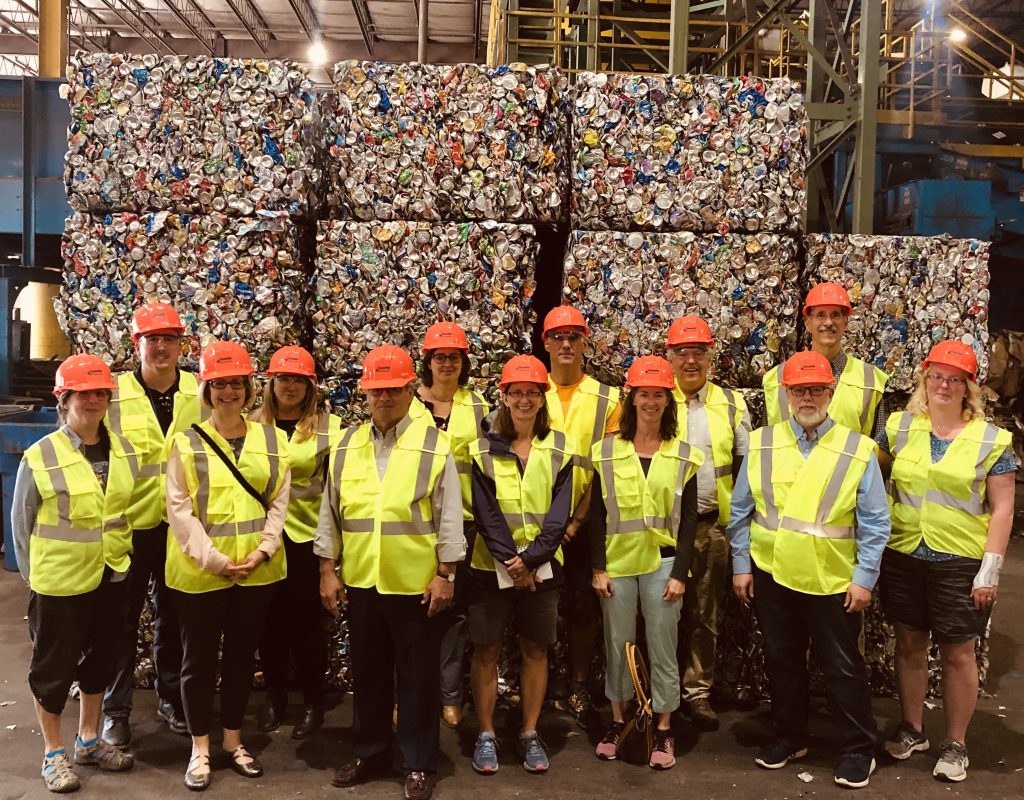
Last week, we toured the Sierra Processing facility in Albany. For County Waste customers, this is where all of your recyclables go after County Waste picks it up. It was quite an eye-opening tour.
A coalition of interested groups attended the tour, including representatives from the City of Saratoga Springs: Finance Commissioner Michele Madigan, Public Works Commissioner Anthony Skip Scirocco, Public Works Business Manager Mike Veitch, and Sustainability Coordinator Tina Carton, and DPW Executive Assistant Rachael Fragomeni; Sustainable Saratoga: Art Holmberg, Bill Boehmke, Wendy Mahaney; Skidmore College: professors Karen Kellogg, Mark Youndt, and Anne Ernst; and the Saratoga Springs Public Library: Issac Pulver and Jennifer Ferriss.
One question we hear a lot lately is “Where is our recycling going?” Much of what we heard about this issue was reassuring. The Chinese ban on recyclables has definitely hurt the recyclables market overall. Instead of small market swings in prices, the Chinese ban created a large drop in the value of different types of recyclables. It was reassuring to hear that County Waste has not cut or dropped any services in our area, though the costs have increased. Staff asserted that “recycling is not dead” and they estimate that we have about 2-3 years of the current unpredictability in the market before things will settle down.
So where are recyclable materials going after being processed at the Sierra Processing facility?
- All of their paper is being recycled domestically now, including plants in Glens Falls, Staten Island and Virginia.
- Cardboard is heading to Solvay, Niagara Falls, and some to Canada.
- Most of the glass, metal, and plastic is staying in North America (but see discussion below on what is happening with glass).
- Plastic #1 and #2 actually have a strong market right now, though the prices are still lower than before the Chinese ban. One upside to this is that there has been an upsurge in end users of these materials due to the lower price.
- Plastics #3-7 are all mixed together and sold as polypropylene. #3 and #6 are not really recyclable, but they receive so little of it that it is just considered an acceptable amount of contamination mixed in with the other plastics.
Export markets are also expanding. This is particularly true in India and southeast Asia, where there are more export opportunities now than before the Chinese ban. Some of the emerging markets are India, Indonesia, Korea, Malaysia, and Vietnam.
This photo above shows the contamination present in the recyclable glass. Bottle caps, shredded paper, and many other small items end up mixed in with the paper. It is tough to show in a photo just how much non-glass material is in this pile.
Contamination plagues the industry
The Sierra Processing facility processes 12,000 tons of recyclables each month. Fifteen percent of what comes in on the trucks ends up as trash in the landfill. This includes contamination like plastic bags, solid waste, non-recyclable plastics, and a small portion of recyclables that are just too contaminated to cost-effectively sort. For reference, the national average is about 25%.
Which brings me to glass. This was the most disappointing, disheartening, part of the tour for many of us. While infinitely recyclable in theory, sorting facilities hate glass. Glass has a negative value (they would have to pay to recycle it), small pieces are everywhere and pose a risk to employees, and it wears out the sorting equipment. The glass bottle you put in your bin at home is typically broken into small pieces by the time it gets to the end of the processing line (see photo to the left). The small pieces of glass are so contaminated with bottle caps, shredded paper, and other small bits that it really has no market. To remove more of that contamination would be extremely labor and cost intensive, so this material is repurposed for things like replacing gravel as a road substrate in the local landfill. In addition, sand is such a cheap raw material that most new glass is made from sand rather than recycled old glass. Note: this does not apply to glass bottles that are taken back for their $0.05, because they do not have the contamination issue that single-stream recycling has. In fact, they told us that expanding bottle bills to include more glass would actually help them. Though they also noted that expanding the bottle bill to include additional high-value plastics would actually hurt these processing facilities because the bulk of what would be coming into the facility would be items with a low market value.
What can we do to help?
Wishcycling is a major problem that hurts the recycling industry. The mantra should be WHEN IN DOUBT, THROW IT OUT! Not only does this contaminate the recyclables, but it slows down processing. They are currently shut down 30% of the time to unjam and detangle contaminants that bind up the machinery.
- NEVER PUT A PLASTIC BAG IN THE RECYCLING BIN (with one tiny exception)! You can take them back to the store, but they get tangled and shut down the processing machines. IF you are recycling shredded paper, please put it in a clear plastic bag so that they can sort that out before it goes through the sorting equipment. Bagging the shredded paper helps reduce contamination in the later stages of sorting.
- NO BATTERIES! Lithium batteries are particularly dangerous – they combust when going through the equipment and can cause fires. There are several fires at the facility each month due to the combustion of contaminants like batteries. Vaping cartridges, which contain lithium ion batteries, are an emerging concern because of this fire risk.
- NO ROPES, CORDS, LIGHT STRINGS, VHS/CASSETTE TAPES in the recycling. They wrap around the equipment and shut down processing.
- IF IT IS MADE OF MORE THAN ONE THING, IT IS NOT RECYCLABLE. Those peanut cans with the cardboard sides and metal bottoms are not recyclable. Disposable cups for coffee and soda are not recyclable because they have a wax or plastic liner. WHAT CAN YOU DO? Contact the manufacturer and tell them to use recyclable packaging for their products!
- COMPOSTABLE IS NOT RECYCLABLE! If your coffee cup or to-go container says it is compostable, you cannot recycle it.
If you ever have the opportunity to go on a tour of a facility like this, do it. It changes your perspective on the importance of RECYCLING RIGHT. My new recycling mantra: when in doubt, throw it out!
Click here for a pdf version of this post.

